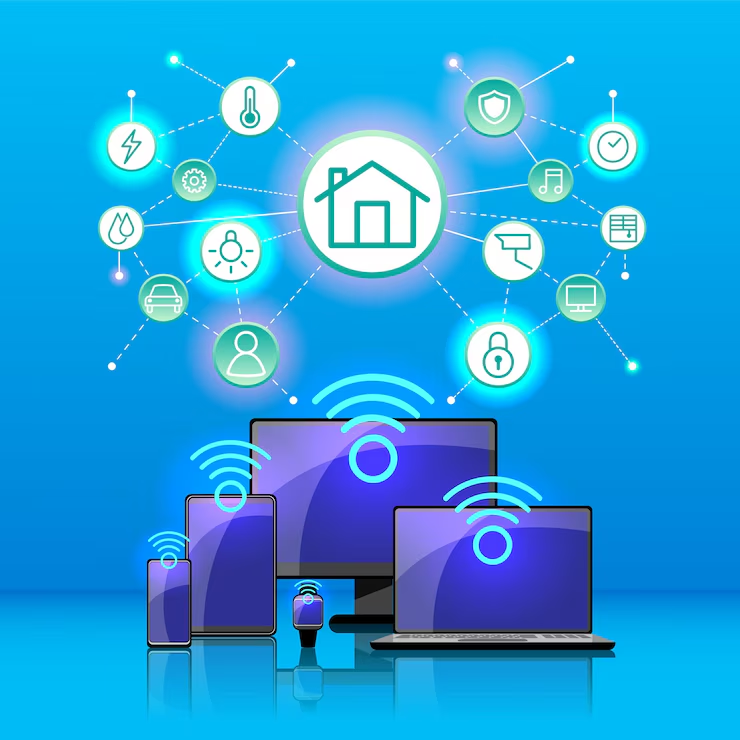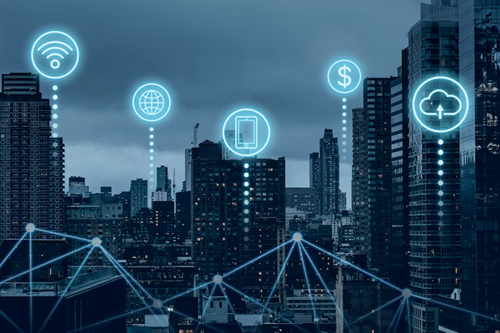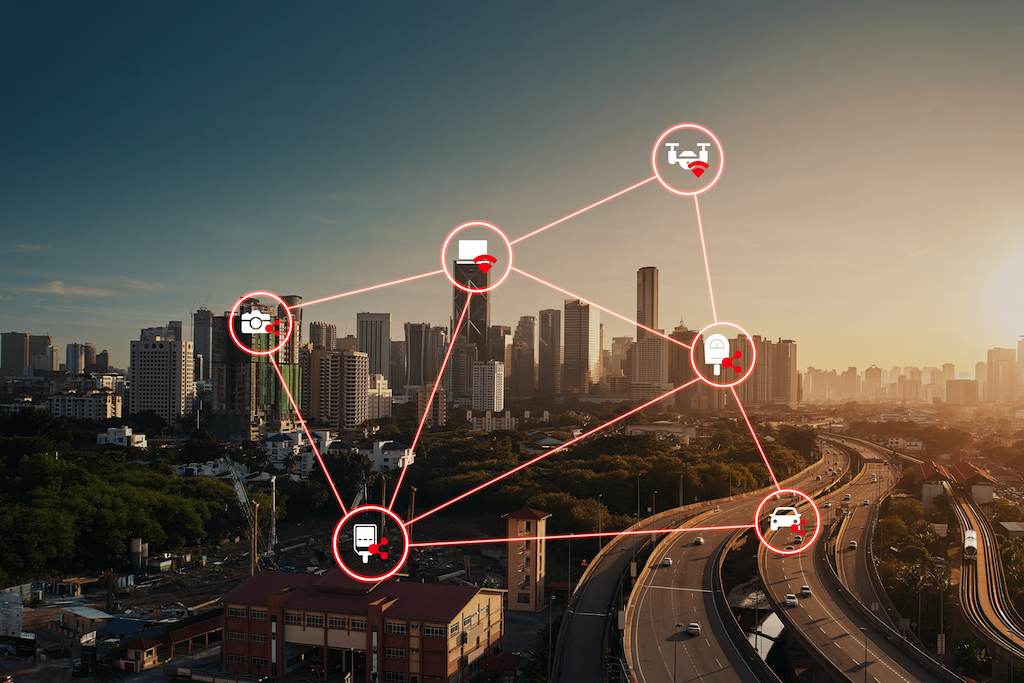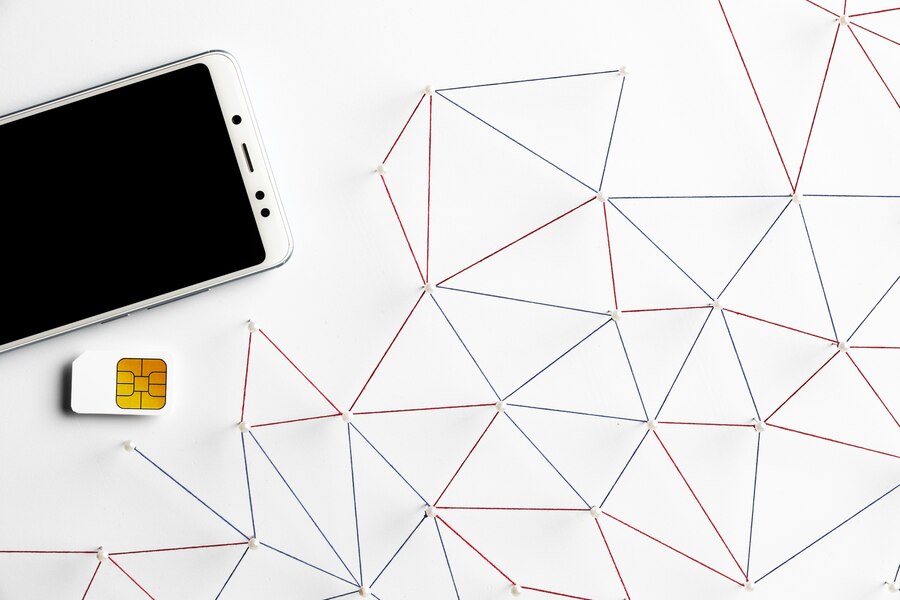Remote Monitoring in IoT: Transforming Industries with Real-Time Insights
-
April 7, 2025
-
8 min read
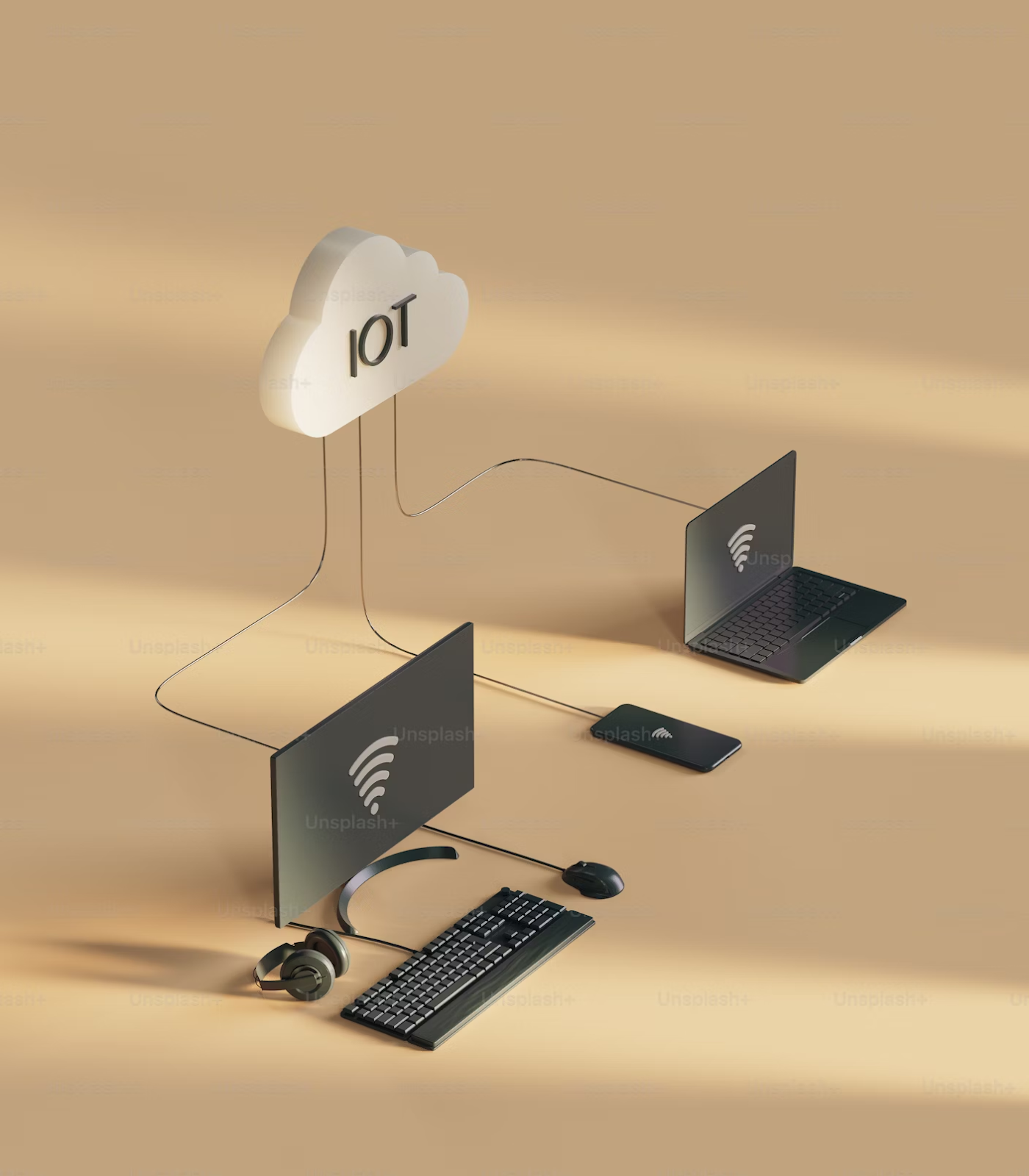
Imagine a world where machines predict failures before they happen, farms optimise water usage without human intervention, and doctors monitor patients remotely without needing frequent hospital visits. This isn’t the future, it’s happening right now, thanks to the IoT remote monitoring system.
Across industries, businesses are using real-time data and connected devices to improve efficiency, reduce costs, and enhance decision-making. From smart factories preventing equipment breakdowns to logistics companies tracking shipments with pinpoint accuracy, IoT-driven remote monitoring is revolutionising operations.
In this blog, let’s check out how the IoT remote monitoring system is reshaping industries, the benefits it brings, the challenges businesses face and how they can overcome them.
Remote Monitoring in IoT | Overview
Remote monitoring in IoT refers to the ability to observe, collect, and analyse data from connected devices and sensors in real time. These devices transmit information to cloud platforms, allowing users to monitor conditions, detect anomalies, and take action without being physically present.
Industries use IoT-enabled remote monitoring for a range of applications, including:
- Predictive maintenance: Identifying equipment failures before they occur
- Asset tracking: Monitoring the location and status of valuable assets
- Environmental monitoring: Measuring temperature, humidity, air quality, and other conditions
- Process automation: Help industrial workflows function optimally
- Energy management: Tracking and optimising energy consumption
The real-time insights from IoT-powered monitoring systems help businesses enhance productivity, improve operational efficiency, and reduce downtime.
Key Technologies Powering IoT-Based Remote Monitoring
Several technologies enable IoT-based remote monitoring. These include sensors, connectivity protocols, cloud computing, and artificial intelligence. Each component plays a crucial role in maintaining smooth data collection, transmission, and analysis.
1. Sensors and Edge Devices
Sensors act as the foundation of IoT monitoring systems. They collect critical data such as temperature, pressure, motion, and energy usage. Edge devices process this data locally before transmitting it to cloud servers, reducing latency and bandwidth usage.
2. Connectivity Protocols
IoT devices use multiple communication technologies to transmit data. These include:
- Wi-Fi and Ethernet: Suitable for high-speed data transmission in industrial environments
- Cellular Networks (4G/5G): Enables remote connectivity in large-scale applications
- LoRaWAN and NB-IoT: Supports long-range, low-power communication for remote locations
- Bluetooth and Zigbee: Ideal for short-range, low-power applications
3. Cloud Computing and Big Data Analytics
Cloud platforms store and process vast amounts of IoT data. Businesses use analytics tools to gain actionable insights, identify trends, and optimise operations. Services like AWS IoT, Microsoft Azure IoT, and Google Cloud IoT provide scalable solutions for remote monitoring.
4. Artificial Intelligence and Machine Learning
AI-powered analytics enhance remote monitoring by predicting failures, detecting anomalies, and automating decision-making. Machine learning algorithms improve over time, offering more accurate insights and recommendations.
Applications Across Industries
Here is how industries are adopting IoT remote monitoring system to sustain and grow:
1. Healthcare: Enhancing Patient Care and Hospital Efficiency
Remote patient monitoring (RPM) uses IoT to track vital signs, enabling doctors to manage chronic diseases and post-surgery recovery more effectively. Devices like glucose monitors, ECG sensors, and smart wearables send real-time data to healthcare providers, allowing early intervention.
Hospitals use IoT to monitor medical equipment, track medicine inventory, and maintain optimal environmental conditions for sensitive drugs.
2. Manufacturing: Enabling Smart Factories
IoT-powered remote monitoring in manufacturing helps detect equipment failures before they cause downtime. Sensors track machine performance, temperature, and vibration levels, sending alerts if anomalies arise.
Predictive maintenance reduces operational costs, while real-time monitoring enhances supply chain visibility. Smart factories use IoT to automate production lines for higher efficiency.
3. Agriculture: Precision Farming for Higher Yields
Smart agriculture leverages IoT sensors to monitor soil moisture, weather conditions, and crop health. Farmers receive data-driven recommendations, enabling precise irrigation and fertiliser application.
Livestock monitoring solutions track animal health, location, and movement patterns, improving farm productivity. Drones equipped with IoT sensors assess field conditions, reducing manual labour.
4. Logistics and Supply Chain: Improving Fleet & Asset Management
IoT-based fleet tracking enables logistics companies to monitor vehicle location, fuel consumption, and driver behaviour in real time. Sensors detect cargo conditions so that perishable goods remain at optimal temperatures during transit.
Warehouse automation uses remote monitoring to manage inventory levels, reducing stock shortages and overstocking issues.
5. Energy and Utilities: Enhancing Operational Efficiency
Power grids, water management systems, and oil refineries use IoT for remote monitoring to detect faults and prevent failures. Smart meters track energy consumption, enabling demand forecasting and dynamic pricing.
Renewable energy plants leverage IoT to optimise solar and wind power generation. Sensors monitor panel efficiency and weather conditions to deliver maximum output.
Benefits of Remote Monitoring in IoT
Industries across India are adopting IoT remote monitoring system to optimise operations, reduce costs, and improve efficiency. This technology enables businesses to track assets, predict failures, and make data-driven decisions in real time. Here are the key benefits:
- Real-Time Decision-Making: Businesses can monitor critical operations instantly, detect issues, and take corrective actions before they escalate, reducing downtime and improving efficiency.
- Cost Savings: Predictive maintenance helps prevent unexpected equipment failures, reducing repair costs. Remote monitoring also minimises the need for manual inspections, lowering labour expenses.
- Enhanced Security and Safety: IoT-enabled surveillance, access control, and environmental monitoring improve workplace safety. Organisations can detect hazards, track employee health conditions, and prevent security breaches.
- Increased Operational Efficiency: Automating monitoring processes reduces human errors and maintains optimal workflow management. Businesses can optimise resource utilisation and eliminate inefficiencies.
- Scalability and Flexibility: IoT remote monitoring solutions adapt to business needs, allowing companies to expand their monitoring capabilities without significant infrastructure investments.
- Better Compliance and Reporting: Industries such as healthcare, manufacturing, and logistics benefit from automated data collection to comply with safety and quality standards while simplifying audits.
- Sustainability and Energy Optimisation: IoT solutions help businesses track energy usage, reduce waste, and implement sustainable practices, contributing to environmental conservation.
Businesses leveraging the IoT remote monitoring system can gain a competitive edge by improving productivity, enhancing safety, and driving innovation.
Minor Challenges in Implementing IoT Remote Monitoring
- Data Security and Privacy Concerns: IoT devices collect vast amounts of sensitive data. Cybersecurity threats, including hacking and data breaches, pose risks to businesses. Strong encryption, authentication, and regular security updates are essential.
- High Initial Investment: Deploying IoT-based monitoring requires investment in sensors, connectivity, and cloud services. While long-term savings outweigh initial costs, budget constraints may slow adoption.
- Connectivity Limitations: Reliable network connectivity is crucial for real-time monitoring. Rural areas in India often face connectivity challenges, limiting IoT deployment in agriculture and logistics sectors.
- Data Overload and Management: With thousands of connected devices generating data, businesses must implement efficient data management and analytics strategies. Poor data processing can lead to inefficiencies and inaccurate insights.
- Integration with Legacy Systems: Many industries rely on legacy equipment that lacks IoT compatibility. Retrofitting old machinery with sensors and integrating them with cloud platforms can be complex and expensive.
Airtel IoT Connectivity: Powering Reliable Remote Monitoring
Remote monitoring solutions require a stable, secure, and scalable network infrastructure. Airtel IoT connectivity solutions provide a strong foundation for businesses looking to implement IoT-based remote monitoring across industries such as healthcare, logistics, energy, and manufacturing.
With advanced connectivity technologies like 5G, NB-IoT, and cloud-based IoTHub, Airtel enables uninterrupted communication between devices while offering stringent security and real-time insights.
Key Benefits of Airtel IoT Connectivity for Remote Monitoring
1. Scalable and Reliable Network
Airtel’s IoT connectivity supports businesses as they expand their remote monitoring capabilities. With advanced network solutions such as NB-IoT and 5G, enterprises can connect thousands of devices without compromising performance.
2. IoTHub: Centralised Device Management
The IoTHub platform allows businesses to manage all connected devices from a single interface. Key features include:
- Flexible billing options to optimise costs.
- Network feasibility mapping for efficient device placement.
- Secure APN (Access Point Name) connectivity, reducing cybersecurity risks.
3. Secure and Efficient Communication
Airtel IoT guarantees end-to-end security for remote monitoring applications. Businesses can leverage:
- Multi-cloud support, offering secure data hosting and integration.
- Emergency calling and location tracking, even without GPS.
- End-to-end encryption, protecting sensitive data from cyber threats.
4. Real-Time Insights and Predictive Analytics
Remote monitoring requires instant access to data for proactive decision-making. Airtel’s IoT solutions offer:
- Live tracking and analytics for SIM-wise data usage.
- Automated diagnostics, helping businesses identify and resolve network issues.
- Deep network performance insights, enabling predictive maintenance and reducing operational downtime.
5. Industry-Specific IoT Solutions
Airtel provides tailored IoT solutions for various sectors:
- Logistics: Complete fleet and shipment visibility, optimising fuel consumption and driving behaviour.
- Utilities: Smart meter connectivity with cloud-hosted management systems.
- Automotive: IoT-powered vehicle tracking, theft alerts, and remote diagnostics.
- Retail and POS: Real-time transaction tracking for hassle-free payment processing.
Final Say
IoT remote monitoring system is transforming industries by providing real-time insights, enhancing operational efficiency, and reducing costs. Businesses in healthcare, manufacturing, logistics, agriculture, and utilities are leveraging IoT to automate processes, ensure predictive maintenance, and improve decision-making.
To fully unlock the potential of remote monitoring, businesses need a reliable, scalable, and secure IoT connectivity solution. Airtel IoT provides end-to-end connectivity with 5G, NB-IoT, and cloud-based management through its IoTHub platform.
Choose Airtel IoT to power your remote monitoring solutions and stay ahead in an increasingly connected world.
 Share
Share


